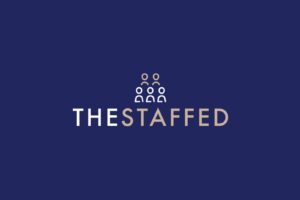The New Hybrid Reality of Post-Pandemic Work
The world of work is transitioning, this time not due to a sudden crisis, but as a calculated response to one.
Since the global pandemic that changed everyone, businesses have rebuilt, restructured, and reimagined how teams operate. But 2025 brings a new reality: hiring freezes, budget constraints, and a sharp rise in contract and staffing roles are reshaping what “workforce strategy” really means.
This isn’t a temporary trend. It is a hybrid reality, a balance between stability and flexibility that is quietly defining the next era of organizational growth.
1. The Return of Cost Discipline
In 2020, organizations invested heavily in digital transformation, remote tools, and rapid hiring to meet new market demands. By 2023–24, however, macroeconomic pressures ranging from inflation and interest rate hikes to geopolitical uncertainty have forced leaders to tighten budgets again.
The result is clear: full-time hiring freezes across industries like tech, SaaS, healthcare, and even consulting. Budgets once devoted to long-term talent pipelines are now redirected toward short-term, project-based engagements.
But this time, the response isn’t purely defensive. Companies have learned from the pandemic that agility is power. By curbing fixed costs and adopting flexible workforce models, they are protecting both financial health and operational momentum.
2. The Rise of the Contract Economy
Freelancers, gig workers, and staffing professionals aren’t new, but their strategic value has skyrocketed.
According to LinkedIn and Gartner data, over 45% of global organizations now rely on contingent or contract talent to fill specialized roles or manage short-term projects.
This model works on both sides:
- Companies gain flexibility, scaling teams up or down as projects demand.
- Professionals gain independence, mobility, and the ability to work across multiple industries without long-term ties.
In many ways, the pandemic normalized this approach. Once “stopgap” measures like contract staffing have evolved into core business strategies, particularly in functions like marketing, IT, analytics, and Salesforce consulting, where project-driven goals dominate.
Contractors are no longer just temporary workers; they are specialized partners in transformation.
3. The Hybrid Staffing Reality
The pandemic permanently altered the structure of work.
What started as remote-first necessity has matured into hybrid workforce models, mixing in-office, remote, and contract-based professionals within a single ecosystem.
This means the modern organization now looks less like a hierarchy and more like a network, a web of full-time employees, freelancers, consultants, and automation tools collaborating toward shared outcomes.
HR leaders now face a new kind of challenge:
- How do you build culture when half your team is on a six-month contract?
- How do you measure productivity and loyalty when engagement is fluid?
- How do you protect IP and data in a decentralized workforce?
The answer lies in workforce orchestration, a blend of technology, policy, and trust that keeps hybrid teams aligned, informed, and inspired. The best organizations are already adopting tools that integrate gig platforms, collaboration apps, and cloud-based HR systems to manage this complexity seamlessly.
4. Skills Over Titles
Another visible shift in this new staffing landscape is the decline of traditional job titles.
Roles are becoming more fluid, defined by skills rather than static designations.
For example, instead of hiring a “Marketing Manager,” organizations now look for skills like “campaign automation,” “performance optimization,” or “AI-assisted content strategy.”
This skill-first mindset opens the door for contract talent to thrive. Experienced professionals can position themselves around specific expertise, offering targeted solutions without the overhead of full-time employment.
On the employer side, this shift allows faster project execution and a more diverse range of ideas, since organizations can tap into a global, on-demand talent pool rather than local hires alone.
5. The New Employer Brand: Flexibility and Trust
In this evolving hybrid world, the employer brand isn’t just about compensation or culture, it’s about adaptability.
Workers now prioritize flexibility, autonomy, and purpose as much as they value security.
Companies that succeed in attracting top talent, even during hiring freezes, are those that communicate trust and openness. They are transparent about financial realities, emphasize skill-building opportunities, and offer flexible engagement models that empower professionals to contribute meaningfully, whether on payroll or contract.
This transparency fosters long-term relationships, ensuring that even contractors remain loyal advocates long after their projects end.
6. Preparing for the Future of Work
The current wave of budget cuts and staffing realignments may feel like a step backward, but it’s actually an evolution forward.
Organizations are learning to operate leaner, smarter, and more resiliently. The future workforce will not be defined by the number of employees but by the quality of collaborations, by how effectively teams can adapt, integrate, and deliver value in fluid environments.
As AI continues to automate routine work, human talent will increasingly move toward strategic, creative, and analytical domains, often on flexible or contractual terms. The companies that win will be those that blend automation with human adaptability, full-time depth with on-demand breadth.
Conclusion
The post-pandemic world of work is no longer about returning to “normal.”
It is about redefining balance, between stability and agility, budgets and innovation, full-time loyalty and project-based freedom.
Hiring freezes and budget cuts aren’t the end of opportunity. They are signals of a more strategic workforce era, where contract talent, hybrid models, and skill-based ecosystems drive the next phase of growth.
The organizations that embrace this hybrid staffing reality won’t just survive uncertainty, they will master it.




